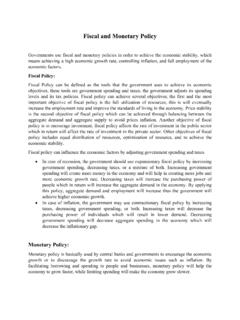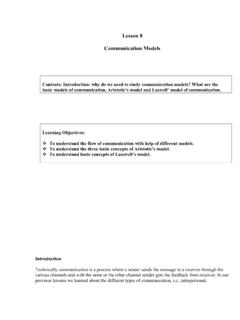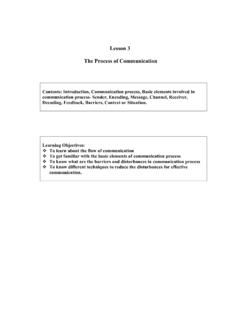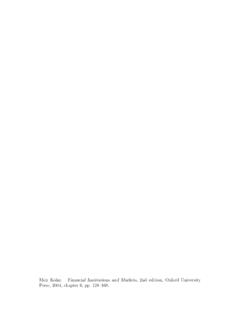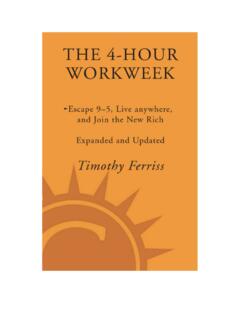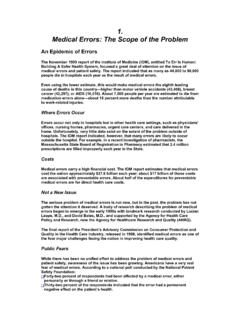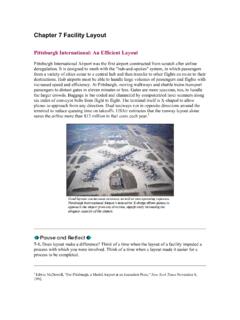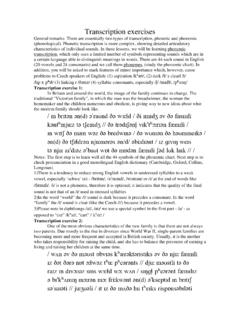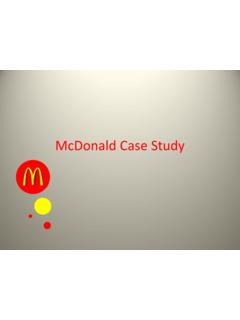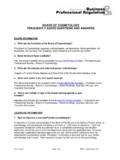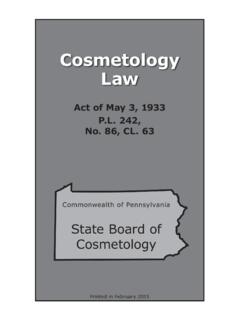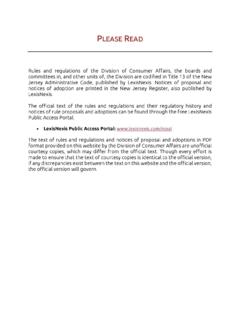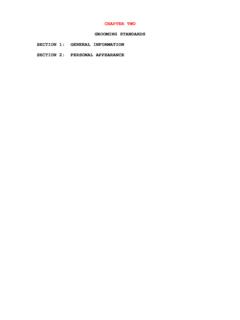Transcription of The chemistry of perming & rebonding - Masaryk University
1 1 The chemistry of perming & rebonding Some of us have naturally curly hair but want it straightened; others have it naturally straight but want it curly. But whatever the style you like to wear, there's chemistry involved in it! The structure of hair Hair is made mostly of a protein called keratin, which is also present in nails. In hair, keratin molecules are arranged in straight bundles. These bundles are held together by disulphide bonds (-S-S-), which give strength to the hair. Disulphide bonds are made by the amino acid called cysteine. The cysteine of one keratin molecule forms a disulphide bond with the cysteine of the neighbouring keratin molecule. The more disulphide bonds there are in a strand of hair, the straighter it is.
2 Ammonium thioglycolate: the perm salt Ammonium thioglycolate (HSCH2CO2NH4) is a compound that can break disulphide bonds. This is because it contains a thiol group (-SH). The thiol group replaces one of the sulphur atoms in the disulphide bond, like this: Keratin-S-S-keratin + 2HS-CH2CO2NH4 --> -HO2CH2CS-SCH2CO2H + 2NH3 + 2HS-keratin When the disulphide bond is broken, the keratin bundles come apart, and hair is weakened. Ammonium thioglycolate is therefore used widely in beauty parlours when customers want their hair re-styled. However, if you use too much of it, or if the reaction is left for too long, you could end up going bald. So do not, ever, try it at home! If you have watched the film Legally Blonde, you'll have seen Reese Witherspoon (acting as a law student) win her first case by her knowledge of the chemistry of perms!
3 2 How to get your hair re-styled If you'd like your hair curled, it's called a perm. If you like it straightened, that's rebonding . In both cases, the steps are very similar. First, the beautician will wash your hair thoroughly to clean it. Then she applies perm salt (ammonium thioglycolate solution) to it for a short while. It releases ammonia, which loosens the hair and allows the glycolate to seep through. If you want a perm, your hair will be tied around curlers to get the curls you want. If you want it rebounded, it is pressed firmly among flat irons till it becomes straight. When the hair is shaped to your satisfaction, it needs to be strengthened again so that the style becomes permanent. For this, an oxidation lotion is applied.
4 This contains hydrogen peroxide (H2O2), which reconstitutes the disulphide bonds. 2 Keratin-SH + H2O2 --> Keratin-S-S-keratin + 2H2O Another way to get your hair rebounded is to use lye soap or lye cream. This contains 5-10% of sodium hydroxide, which breaks the disulphide bonds. The hair loosens up, causing the curls to disappear. After treatment with lye soap, the hair is washed with water and conditioner to remove the sodium hydroxide, which can otherwise corrode the scalp. How does a perm work? JONATHAN LIANG APRIL 24, 2010 0 The year 2009 marked the 100th anniversary of the permanent wave, also known as the perm. In 1909, Charles Nessler submitted a patent to the Patent Office for A New or Improved Process of Waving Natural Hair on the Head.
5 Since then, the perm has become a staple of hairstylists around the world. Yet the perm is not just an art. Rather, it relies on the fundamental chemical structure of hair for all of its effects. So how do a few chemicals and some heat produce those glorious curls? To answer that question, we must first understand what holds hair together. About 95% of hair is a single protein, keratin, which has a long, helical shape. Individual keratin molecules aggregate into larger helices called protofibrils, which in turn compose microfibrils and macrofibrils, forming the superstructure of an individual hair. 3 Keratin molecules are rich in the amino acid cysteine, which contains reactive sulfur atoms.
6 Two cysteine residues on two molecules of keratin can form a disulfide bond, a strong connection that links the keratin molecules, preventing them from slipping past each other. This connection is permanent until acted upon by strong external forces. The disulfide bonds are key players for the curls that a perm produces. Though it is a strong bond, the disulfide bond is still weaker than the bonds within each keratin molecule; it can be broken quite easily by reducing agents, whose electrons attack the bond. In a standard cold perm, hair is put into curlers and the reducing agent ammonium thioglycolate is added. The disulfide bonds break and keratin molecules are now free to move around and adjust to the shape of the curl.
7 Then a neutralizer, such as hydrogen peroxide, is added to reverse the effect of the reducing agent. New disulfide bonds form so the keratin molecules are locked into the shape of the curls. In the last 30 years, variations on the perm have entered the market. For example, the acid perm uses a different reducing agent in combination with heating, resulting in better curling and less damage to the hair. Recently, companies in Asia have taken the acid perm even further and created the digital perm, in which the temperature of the hair is controlled by a computer. The Scientific Processes During perming & Relaxing As we know, the hair is made up of protein chains held together by series of physical and chemical bonds which give the hair its shape and strength.
8 The bonds we are most concerned with in styling the hair are the side bonds. Side bonds are found in two forms physical side bonds and chemical side bonds. Breaking and reforming these side bonds allow us to rearrange the wave pattern of the hair. Physical side bonds can be broken using heat and water and reform when the hair dries and/or cools. However, this article is about perming and relaxing and the scientific processes that occur. When the hair is permed (and sometimes when straightened) the disulfide bonds (the chemical side bonds) of the hair are broken through a chemical reaction called reduction . A reduction reaction involves either the removal of oxygen or the addition of hydrogen.
9 In the case of permanent waving, the reduction is due to the addition of hydrogen. 4 The disulfide bonds join one sulfur atom on one polypeptide chain to another sulfur atom on different polypeptide chain. Perms use reducing agents called thiol compounds, which break the disulfide bonds by adding a hydrogen atom to each of the sulfur atoms in the disulfide bonds. With the disulfide bonds broken, the polypeptide chains are able to slip into their new shape. The broken disulfide bonds are reformed through the neutralization of the thio compound used to break them. The most common neutralizer is hydrogen peroxide and the chemical process that removes the hydrogen atoms and reforms the disulfide bonds is called oxidation.
10 Oxidation can result in the lightening of the hair color especially if a strong thio compound was used and this is why the hair should be rinsed carefully and blotted thoroughly before applying the neutralizer. The oxidation reaction combines the hydrogen and oxygen atoms in the peroxide molecules with the hydrogen atoms used to break the disulfide bonds to form two separate molecules of water. (Peroxide {H2O2} + Hydrogen + Hydrogen {+ H + H} = Water {H2O + H2O}) The removal of the hydrogen atoms from the sulfur atoms forces them to reform their disulfide bonds in the new shape (around the perm rods). The process is the same for relaxers and straighteners that use thio compounds, except that these are removing curl rather than creating it.

